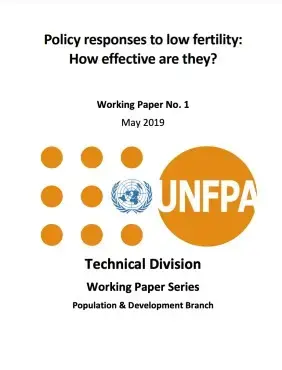In the last three decades sub-replacement fertility has spread around the world. One-half of the global population today lives in countries where the period Total Fertility Rate is below 2.1 births per woman. East Asia, Southern Europe and parts of Central, Eastern and South-eastern Europe reached “ultra-low” fertility rates, with the period Total Fertility at 1.0-1.4 and family size at 1.4-1.6 births per woman born in the mid-1970s. Such low period fertility rates are not explained by very low fertility preferences. Women, men and couples in countries with very low fertility typically desire to have two children and their average intended family size is around or above two births. Very low fertility rates signal that there is a wide gap between fertility aspirations and actual family size. This gap tends to be larger for highly educated women, who find it more difficult to combine their career with their family life and aspirations. Consequently, fertility increase is becoming a frequently declared family policy aim: between 1986 and 2015 the number of governments intending to raise their country’s birth rates jumped from 19 to 55. Pronatalist motivation is just one among many goals of family policies, alongside compensating parents for the economic costs of children, fostering parents’ employment, supporting early childhood development, and reducing gender inequalities. Among the main drivers of low fertility is the incompatibility between professional career and family life. In times of women’s massive post-secondary education and labor force participation on the one hand and rising individualistic aspirations on the other hand, the inability to combine paid work with childrearing often results in childlessness or having one child only. This is closely connected with persistent gender inequalities in housework division: for decades, societies with strong traditional gender role norms have been continuously witnessing very low fertility. More recent factors contributing to fertility decline include the trend towards intensive parenting as well as labor market uncertainty and instability coupled with soaring housing prices.
What we do
Policy responses to low fertility: How effective are they?

Publisher
Number of pages
98
Author
UNFPA
Technical Reports and Document
Policy responses to low fertility: How effective are they?
Publication date
01 May 2019

